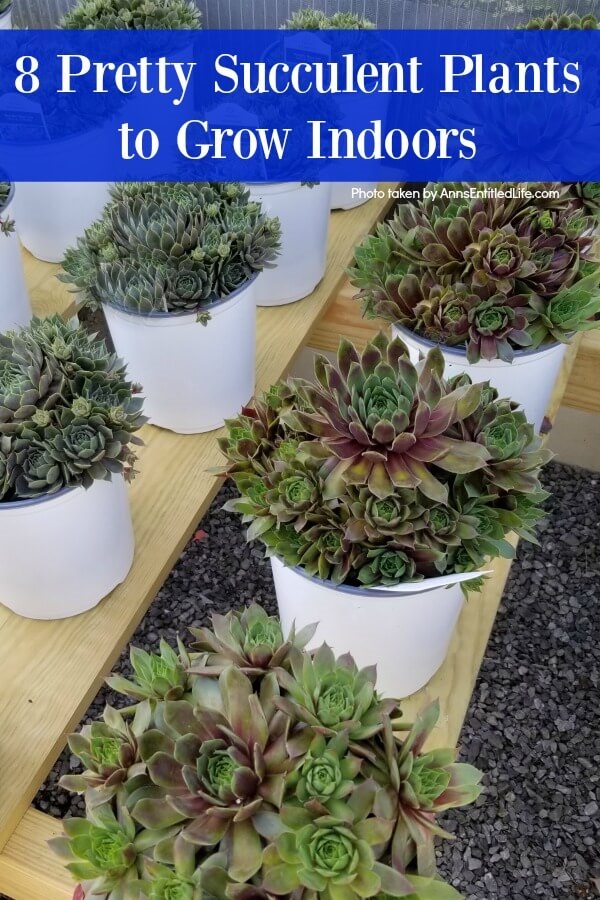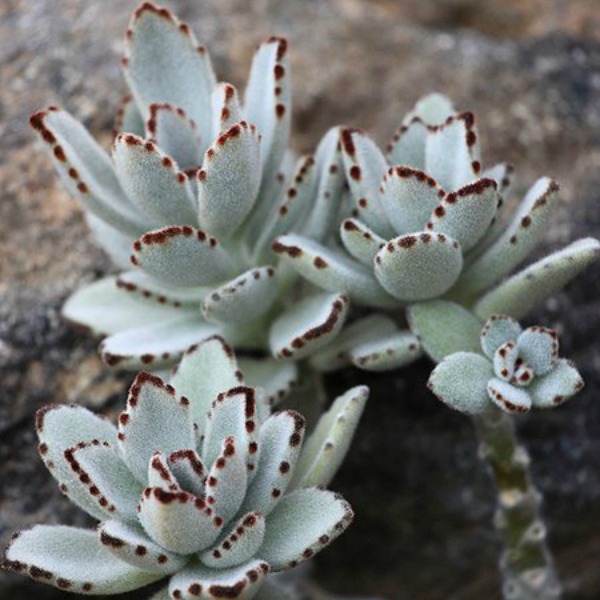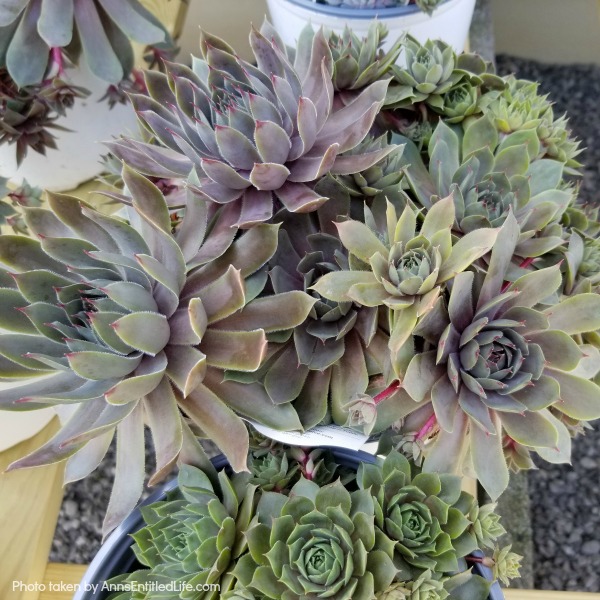Growing succulents indoors is easy! Succulents are wonderful plants to grow in your home. In addition to being tolerant of a variety of temperatures and lighting situations, succulent houseplants are simple to grow. Since these plants have a natural ability to store their own water within their leaves, stems, and roots, most succulents can withstand a little bit of neglect, making them a great option for indoor growing. Whether you are searching for a statement plant for your kitchen or a few smaller, ornamental succulent varieties to add to your home’s décor, consider planting a few of these pretty succulent plants in your home for year-round enjoyment.
How to Plant Succulents Indoors
Planting succulents for indoor use isn’t much different than potting other plants. Be sure your pots have drainage holes in the bottom and use a pot tray or bowl underneath to avoid a wet countertop or table when you water. It’s also important to choose a well-drained potting soil that is designed especially for succulent plants. If you don’t have access to succulent potting mix, amend a traditional potting soil with extra pumice, sand, or perlite to help the soil drain well.
To transplant your succulents into new pots, gently loosen the soil surrounding the roots and place the plant into the new pot. Succulent roots are brittle and shallow, so use care when transferring your succulent to a new pot. As you place the plant in the pot, gently sift the new soil around the roots of the succulent with your finger. Finish by covering the surface of the soil with sand or gravel and allow the soil to dry for a few days before watering.
How to Care for Your Succulents Indoors
While some varieties of succulents may require special care, the majority of the plants on this list are very low maintenance. Succulents love the dry humidity and warm conditions of most homes, making them a wonderful houseplant. Most indoor succulents need bright light, so placing your plants at or near a window that receives sunlight throughout the day is a good idea. You should also water your plants just enough to keep the leaves from drying out. Once a year, your succulent may need a light feeding with fertilizer, as well as a deep soaking to flush out the soil.
8 Pretty Succulent Plants to Grow Indoors
Also known as Haworthias, the Star Window Plant is a hardy succulent variety that can withstand an array of neglect and even some damage. In addition to being a very low-maintenance succulent, the Star Window Plant is also an eye-catching houseplant. The pretty lime-colored leaves sprout in a wedge shape and have a beautiful iridescent quality. Each of the succulent’s leaves look like a lovely piece of stained glass inside your pot.
2. Aloe Vera
This amazing succulent will provide an interesting decorative element to any room and creates a healing sap that has been used for centuries to treat burns and wounds. The large pointed leaves of the aloe vera plant will really make a statement, but watch out for the pointed thorns along their edges. Those sharp thorns can cut someone if they get too close, which means its best to keep your aloe plant out of well-trafficked areas of your home.
3. Burro’s Tail
The beautiful draping leaves in pretty gray-green or gray blue shades are what make Burro’s Tail a beloved succulent for growing indoors. This beautiful plant is at its best when grown in a hanging basket to allow the long stems to shine. The stems of Burro’s Tail can grow up to three feet long, making it a true statement plant in any room.
This lovely succulent is native to Mexico and prefers medium to high light. While Burro’s Tail rarely blooms, you may be a lucky succulent owner who gets to see its lovely pink or red flowers that can appear at the end of the stems during the summer months. This succulent is also surprisingly delicate – the leaves of Burro’s Tail can fall off with the lightest touch. That makes it important to keep this houseplant out of the reach of children and pets to ensure your plant’s long stems remain full throughout its lifespan.
4. Panda Plant
This interesting succulent is typically grown in homes because of its interesting leaves. The Panda Plant features thick green leaves covered with unique silver hairs, which give the plant a fuzzy, bluish appearance. To add even more visual appeal, the light green leaves are tipped with a rusty brown tint. This small succulent is also simple to grow. Just supply it with adequate water (but not too much!) and prune any wayward leaves and stems to help it keep its shape.
While the Ponytail Palm has “palm” in its name, it’s actually not a palm tree at all – and to be quite honest, does not look like a succulent either! The Ponytail Palm succulent’s long green leaves set atop a leathery trunk just make it look more like a palm than a succulent. While this succulent grows slowly, it can reach up to 20 feet when grown indoors, so make sure you have plenty of space for your Ponytail Palm to grow. Native to the United States and Mexico, the Ponytail Palm is the perfect plant for a forgetful gardener because it needs very little watering. Simply plant this succulent in high light or direct sunlight and watch it thrive.
6. Jade Plant
This classic succulent houseplant my grandmother always grew Jade Plants!) is a perennial favorite for good reason – it is one of the easiest succulents on this list to grow. Simply avoid overwatering your Jade Plant and it will last many years to come. It’s also a good idea to plant your Jade Plant in a terra cotta pot to allow for proper air flow through the soil and help balance the plant, which is often top-heavy.
You will love its strong, thick stem and glossy green leaves that show just a tint of red. To keep your Jade Plant looking beautiful throughout its life, you will need to prune its branches on occasion. In addition to keeping the succulent symmetrical, pruning will also help keep your plant from becoming too heavy on one side and toppling over.
There two popular succulent plants varieties known as Hens and Chicks – Sempervivum tectorum and Echeveria elegans. These plants are closely related but look very different. Both these plants produce what are known as “chicks” – small identical plants that are slightly offset from the hen, or mother plant. Both varieties also feature rosette-like leaves, but each has their own flowering patterns. Sempervivum grows star-shaped flowers in a pretty pink shade, and the plants that show blooms will quickly die after flowering. Echeveria, on the other hand, grows bell-shaped blooms each year.
With its long oval leaves, spiky branches and clusters of tiny flowers, Crown of Thorns is definitely an eye-catching succulent. And this pretty succulent from Madagascar will show its beautiful pink and yellow blooms year-round if it sees enough light. But while direct sunlight will produce the best blooms, this adaptable plant can also make do with medium light (though you may not see blooms on your plant.) The care instructions of this succulent also vary based on whether the plant is blooming or not. A Crown of Thorns with blooms needs slightly more water than one without flowers.
Are you interested in more plants? You’ll want to read these posts:
● 75 Acid Loving Plants – If you have acidic soil, you need plants that flourish within an acid soil environment. Flowers, vegetables, shrubs, and trees all have specific soil needs; these 75 acid loving plants are great choices for your gardening and landscaping needs.
● 75 Alkaline Friendly Plants – If you have alkaline soil, you need plants that flourish within an alkaline soil environment. Flowers, vegetables, shrubs, and trees all have specific soil needs; these 75 Alkaline Friendly Plants are great choices for your gardening and landscaping needs.
● 10 Best Low Light Houseplants – If you have a darker room without a lot of natural sunlight, do not despair – you can still grow houseplants indoors! Here is a list of the 10 Best Low Light Houseplants to grow inside. You may be surprised to find so many great options when it comes to growing indoor plants in low light conditions.
● Disclosure the links in this post may be affiliate links.
● For more Gardening posts on Ann’s Entitled Life, click here.
● Enjoy this post? Sign up for the Ann’s Entitled Life FREE Weekly Newsletter to stay connected.




Leave a Reply